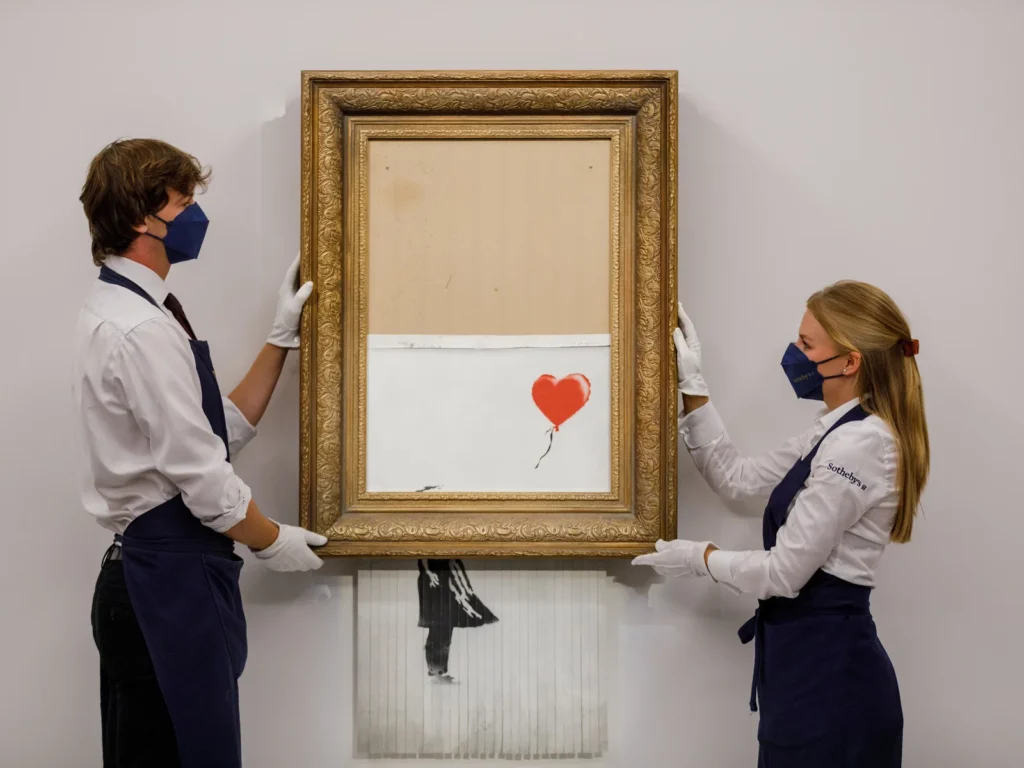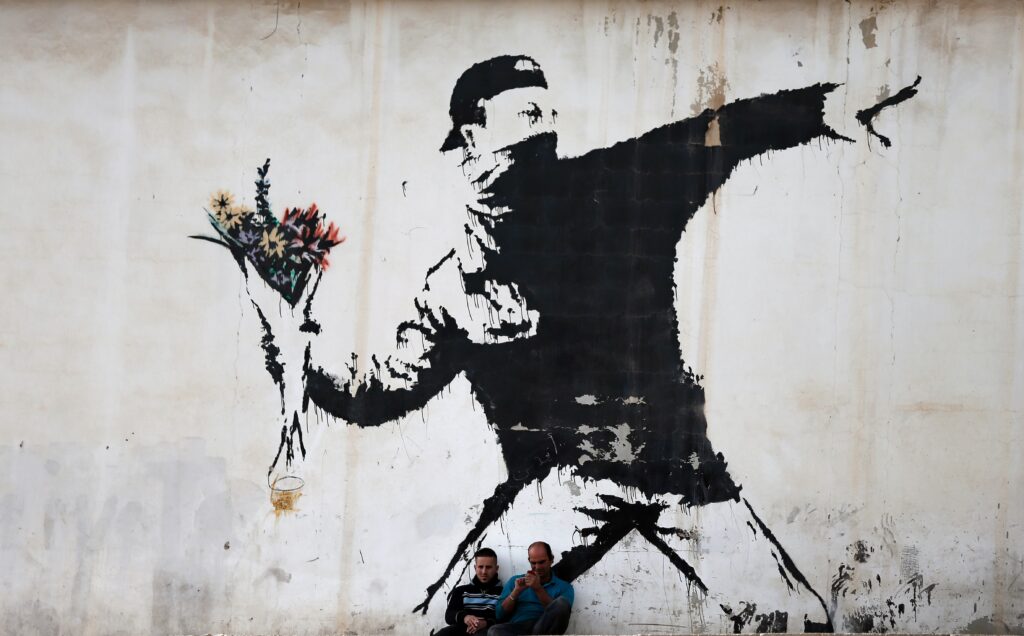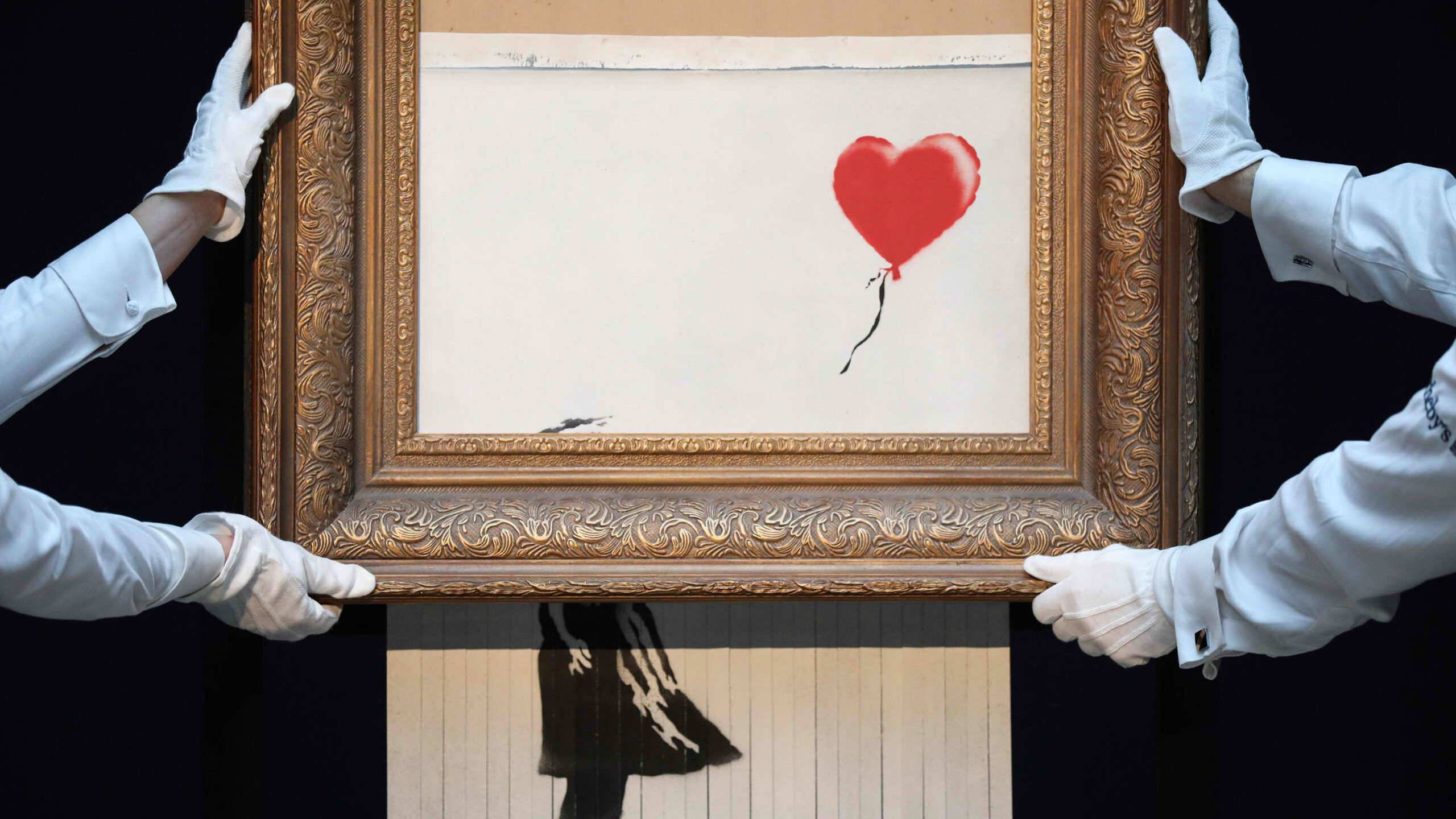By Socratis Santik Oglou,
A few years ago, the work of the British street artist Banksy went up for auction at Sotheby’s London. Moments after the auctioneer banged his gavel announcing its sale for over $1.3 million, a beep sounded and the canvas began to fall through the bottom of the frame and emerge in shreds on the other side. Just after Banksy posted a picture of it with the caption going, going, gone, and then followed up with a video showing how he installed a shredder in the frame, in case it ever went up for auction.
Sotheby’s asserted that they were “scammed” and that they had no idea that this would occur. A regular occurrence at auctions was the fact that the buyer was anonymous. In their press release Sotheby’s explained that what actually happened was that a new work by Banksy had been created at the auction, one that has been authenticated by the artist and given the new title “Love is in the Bin”, after a week of media speculation over who knew about it, and whether the buyer would have to pay for it, had it dried. Following that, Banksy released a director’s cut explaining that during rehearsals, the paintings were completely destroyed each time. This director’s cut also included a vertical video to firmly date the rehearsals, demonstrating both his skill as a master manipulator and the unreliability of his word.

In London in 2002, Banksy created the original painting of a young child reaching out toward a red balloon in the shape of a heart that said, “There is always hope”. Since this, like most of Banksy’s work, was unapproved street art created without permission for the public to enjoy and for property owners or the local government to paint over or protect as they see appropriate, no original murals exist today despite the creation of other versions around the city.
People have attempted to remove and resell Banksy’s public art, and they are capable of doing so, but the majority of his creations are temporary and unrestricted, since that is what the artist intentionally did. In addition to appearing alone in Brooklyn in 2013 with bandages, the heart balloon also appeared in Central Park in 2013 with children standing on a stack of firearms for sale at a cost of $60. In support of the campaign “With Syria” in 2014, he modified the image of the girl holding a balloon. In 2017, a print that Banksy attempted to provide UK residents in some constituencies, if they voted against the Conservative Party included a variant with a Union Jack balloon.
The offer, however, was withdrawn because it is unlawful to accept a gift in exchange for a vote. After a few days, he published this. In a 2017 survey, “Girl with Balloon” bested both this painting by JMW Turner and this one by David Hockney to win the prize for the nation’s favourite piece of art. All of this is to say that by the time the piece above of art appeared at the auction, it had already become a beloved and well-known picture that was expected to fetch up to $400,000 US. The auction report notes that this particular piece was created in 2006 using stenciled spray paint, Banksy’s characteristic technique, but on canvas as opposed to a wall or as a print on paper. Pest Control, the company that handles the artist’s work and authenticates it, certified its authenticity.

Moreover the artist, at a moment, Sotheby’s started putting Bansky’s artworks in gold frames. Banksy, as we know has a particular opinion about gold frames, and so, for his 2009 exhibition at the Bristol museum, Banksy mixed his works with the museum’s collection, many of them in period-appropriate frames, helping his art blend in, at least sort of. One of these was a gold frame laid over a concrete slab with one stick figure asking, “Does anyone really take this kind of art seriously?”, and another replying, “Never underestimate the power of a big gold frame”.
The precarious predicament Banksy has found himself in as his popularity has grown and more and more people try to profit from unauthorized sales and displays of his work is obviously shown in this image, which later surfaced on a wall in San Francisco. Now I think it is doubtful that nobody at Sotheby’s knew what was going to happen to this enormous gold frame or that anyone looking at it would not detect anything odd about it. Additionally, I do not believe that it was a coincidence that the final item in the auction was the film created by Banksy, demonstrating how he built his frame in 2006.
Banksy is a master at garnering attention and stirring up debate. I hope that his anonymity will always be a part of him. He highlights the auction process in general, which is only attentively observed by a tiny community, with this effort. When most of us read news stories about multimillion-dollar purchases, we become queasy and move on. Because most people do not pay attention to the auction system, it continues to exist in its current form. It is a very effective technique for the world’s ultra-rich to acquire and exchange priceless things. Sure, some players have noble intentions, but Banksy’s action has raised awareness on a few important truths.
References
- ‘In rehearsals it worked every time’: Banksy suggests self-destruct stunt didn’t go as planned, edition.cnn.com, Available here
- Banksy’s shredding stunt wasn’t anti-capitalist—it was an emotional ode to the art market, qz.com, Available here
- Banksy’s shredded painting stunt was viral performance art. But who was really trolling who?, nbcnews.com, Available here
- Banksy Sells Works to Unsuspecting Tourists for Total of 420 Bucks, Shakes Very Foundation of Art, gq.com, Available here




